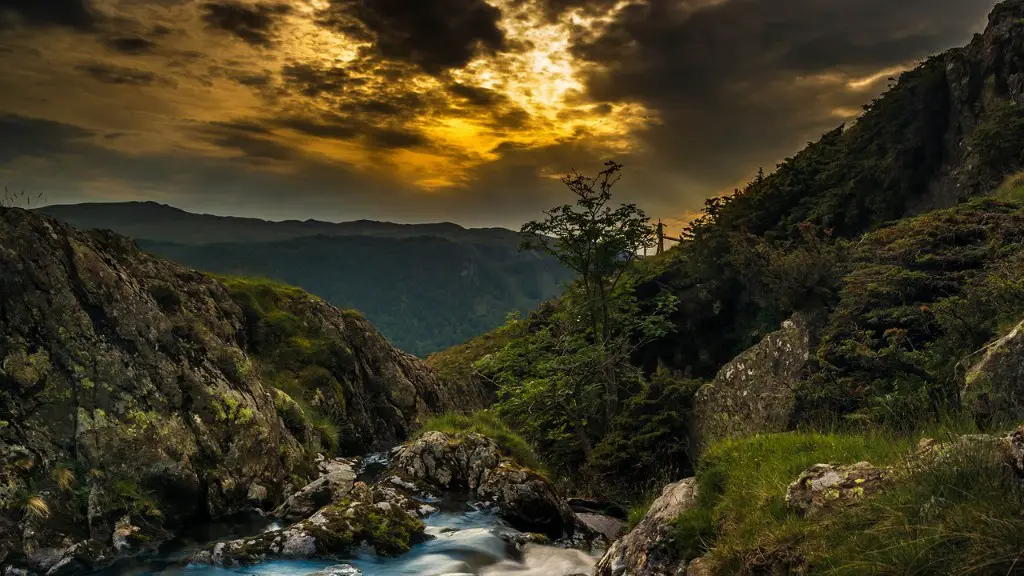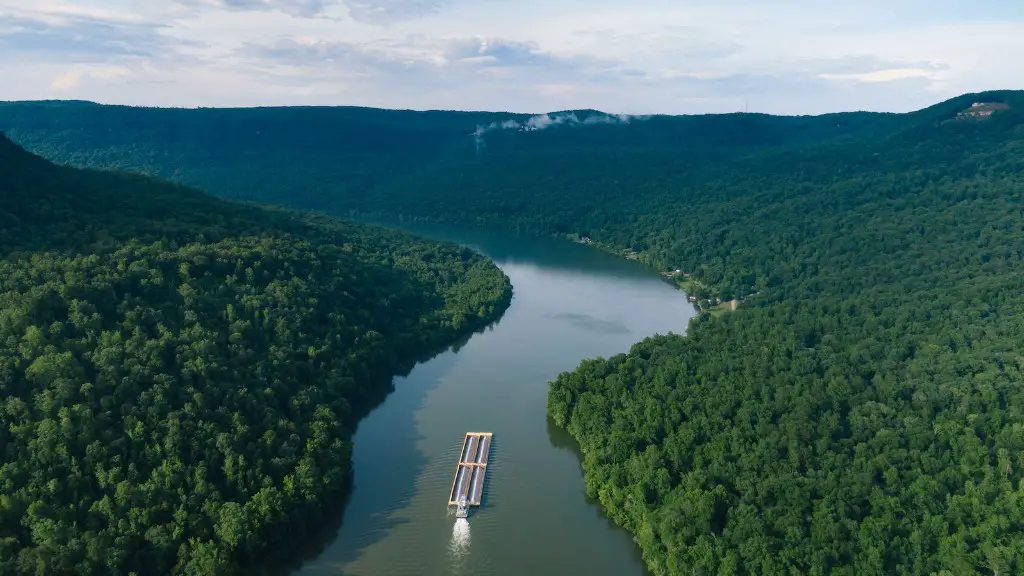Overview
The Mississippi River is the second largest river in North America, second only to the Missouri River. Spanning 2,320 miles in length, it is one of the longest rivers in the world. Starting from the Minnesota Lake Itasca, the Mississippi River flows south for nearly two thousand miles before draining into the Mississippi River Delta near New Orleans, Louisiana. Along the way, it gathers a great number of tributaries, which are smaller rivers or streams that feed into the main river. These tributaries act to gradually increase the overall size of the Mississippi River, making it a crucial part of the hydrological cycle in the region.
Major Tributaries
The Mississippi River has dozens of named tributaries, including the Missouri River, the Upper Mississippi, the Ohio River and the Arkansas River. These major tributaries combine to form a complex network of interconnected waterways, which begins at the Minnesota Lake Itasca in the northern part of the United States and eventually leads to the Gulf of Mexico. Each of these tributaries carries with it a unique system of aquifers, ponds, streams, wetlands and other natural features, making it a highly dynamic environment.
The Missouri River is the largest and strongest tributary of the Mississippi, contributing approximately 45 percent of the total volume of water that flows into the main river. Starting in the Rocky Mountains, the Missouri River takes an east-west course through the Midwest before finally joining the Mississippi in southern Illinois. Along its length, the Missouri River passes through a number of US states, including Montana, North and South Dakota, Nebraska and Iowa.
The Upper Mississippi River is a vast drainage basin, sometimes called the Upper Mississippi Valley. It largely comprises four major tributaries: the Wisconsin River, the Illinois River, the St. Croix River and the Minnesota River. Spanning some 1,025 miles in length, the Upper Mississippi is a major source of water for the main river system, providing an estimated 20 to 25 percent of the total volume of water.
The Ohio River, the second longest tributary, is also one of the most important. Starting in Pennsylvania, the Ohio River is fed by a number of smaller tributaries, including the Allegheny, Monongahela and Muskingum rivers. These rivers together contribute an estimated 14 percent of the total volume of water that reaches the Mississippi.
Finally, the Arkansas River is a 1,450 mile long river that flows from the Rocky Mountains in Colorado and passes through Oklahoma on its way to the Mississippi. The Arkansas River is believed to contribute some 12 percent of the water that reaches the Mississippi.
Environmental Impact
The contribution of these tributaries to the Mississippi River is not only important in terms of volume, but also in terms of their overall effect on the environment. For instance, the presence of these tributaries can help reduce the occurrence of flooding in the main river by providing relief channels for the excess water. Moreover, the tributaries act as a buffer zone, absorbing some of the pollutants and contaminants that would otherwise flow downstream into the main river.
According to scientists, the presence of the Mississippi River tributaries is also crucial in controlling and regulating the local climate. Thanks to its vast length, the Mississippi River absorbs significant amounts of heat from the sun. This heat is then released into the surrounding environment via its tributaries, creating a moderating effect on the climate in the region.
Historical Significance
The tributaries of the Mississippi River have played an important role in shaping the history of the United States. Throughout the centuries, the rivers and streams that feed into the main river have provided critical resources to the many Native American tribes that called the area home. Furthermore, these waterways have been used by settlers to explore the interior of the continent, while also providing an easy and convenient trade route to link the Atlantic coast to the western interior. Even today, the Mississippi River tributaries remain a crucial part of the US economy, connecting cities and regions all across the country.
Tributaries and Ecosystems
The presence of tributaries in the Mississippi River system has also had a significant impact on the local ecosystems. By providing a plentiful source of nutrients and minerals, these tributaries have helped create incredibly diverse and vibrant ecosystems, which are home to a wide variety of plants and animals. In addition, the presence of these tributaries has also helped to maintain and improve the quality of the water in the main river, by ensuring that water flows freely and does not stagnate.
At the same time, the diversity of the tributaries has also caused certain issues. For example, certain tributaries may bring with them increased levels of sediment, which can damage downstream ecosystems. Similarly, the presence of too many tributaries can create extensive flooding, leading to extensive damage and destruction.
Human Impact
The tributaries of the Mississippi River have also experienced human impacts over the years, as people have explored and developed the area for commercial and recreational use. As such, some of these tributaries have been dammed up or diverted, thereby altering their natural flow and resulting in an imbalance in the local ecosystem. Moreover, the pollution created by human activities has also made its way into the tributaries, negatively impacting their health and well-being.
At the same time, people have also recognized the natural beauty and importance of the tributaries, leading to a number of conservation efforts. For example, numerous state and federal agencies have been established to protect and restore the health of the tributaries, while many organizations work to promote the conservation and responsible use of the waterways.
Conclusion
The tributaries of the Mississippi River are an integral part of the overall river system, providing a crucial source of water, nutrients, minerals and energy. Through their presence, these tributaries both shape and enrich the local environment, while providing vital resources to the people and creatures that inhabit the region. Despite the impact of human activities, these remarkable waterways remain an integral part of the region, and continue to provide an important source of sustenance and inspiration.



